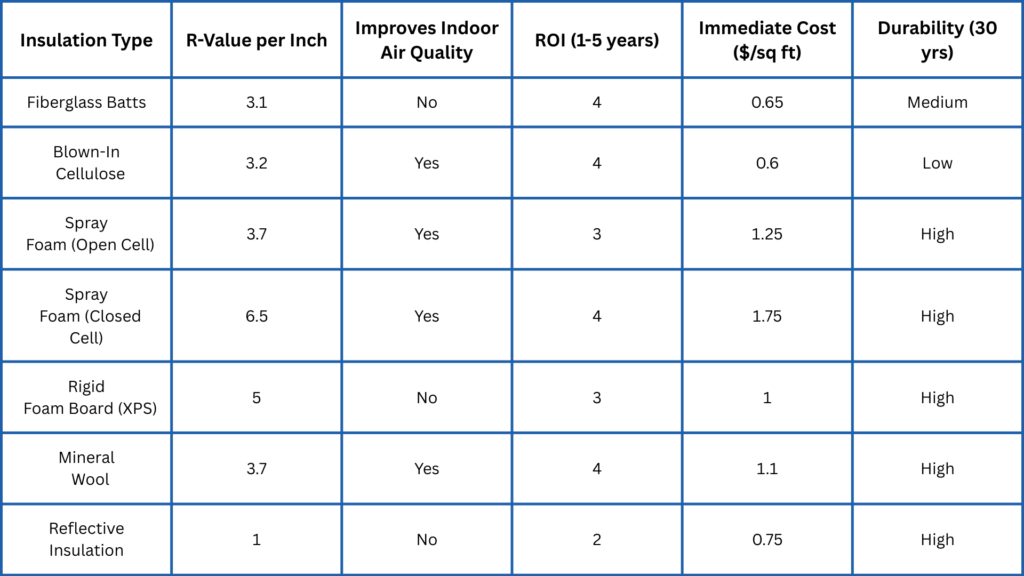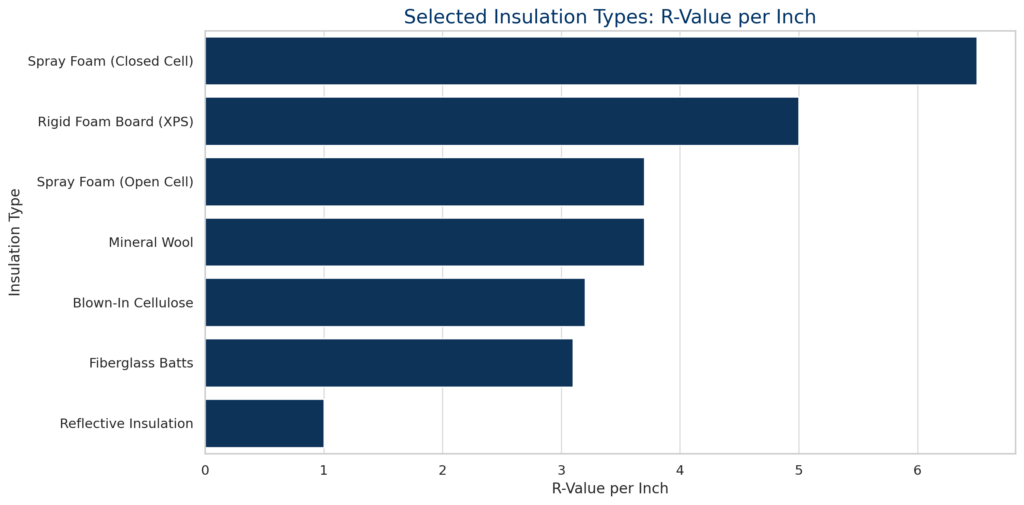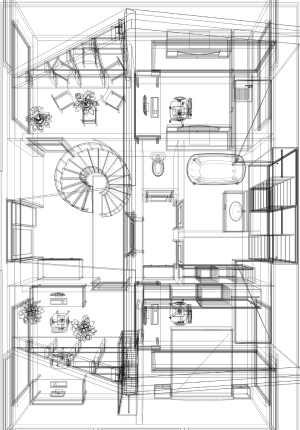Introducing ProCalcs’ New Energy Analysis Services
In the world of building design and construction, small decisions about insulation, HVAC, and moisture
control can have big consequences. Architects, engineers, builders, and homeowners alike strive to
optimize energy efficiency and comfort, but it’s easy to overlook critical factors that lead to costly
mistakes. Poor insulation can drive up energy bills, the wrong HVAC system can underperform (or waste
thousands in operating costs), and unseen condensation issues can cause mold or structural damage. To
help you avoid these pitfalls and improve overall building performance, ProCalcs is introducing a suite of
new energy analysis services. These services – focusing on insulation & envelope performance, HVAC
system comparison, and condensation risk – provide data-driven insights at the design stage or for
existing buildings. Below, we explain each service and show how they empower you to make smart,
cost-effective decisions for your next project.
Insulation & Envelope Performance Analysis

External insulation boards being installed on a building façade as part of improving the envelope’s
thermal performance. Our Insulation & Envelope Performance Analysis service takes a close look at how
well your building’s shell (walls, roof, windows, and insulation materials) will protect against heat loss or
gain. Even high-end HVAC equipment can’t perform efficiently if a building is poorly insulated – in fact,
up to 30% of energy loss in an average home is due to poor insulation
By conducting a thorough insulation performance analysis, we help pinpoint the optimal materials and
design for your project’s envelope. This analysis not only identifies where you might be losing energy,
but also shows how better insulation or construction choices can reduce heating and cooling loads. Key
aspects of an envelope performance analysis include:
Comparing insulation options: We model different insulation materials (and thicknesses) in your walls
and roof to see which offers the best thermal resistance (R-value) and value for money.
Evaluating building components: Our team examines how wall assemblies, roofing systems, and glazing
(windows) contribute to heat loss or retention. By testing various envelope configurations, we can
determine the impact on HVAC system sizing, energy consumption, and utility costs.
Quantifying savings: You receive data on potential reductions in heating/cooling loads and projected
energy cost savings from improvements. For example, adding attic insulation or high-performance
windows might allow you to install a smaller HVAC unit and lower monthly bills.
By quantifying these factors upfront, the insulation and envelope analysis guides architects and builders
toward designs that maximize efficiency. It’s an educational tool for homeowners as well – illuminating
how an investment in better insulation pays off over time. Ready to fortify your building envelope
against energy waste? Consider scheduling an Insulation & Envelope Performance Analysis early in your
project to avoid overspending on heating and cooling.
Right-Dollar HVAC System Comparison
A properly selected HVAC system can run efficiently without wasting energy or driving up long-term
costs. Selecting the right heating and cooling system is a balancing act between upfront cost, operating
efficiency, and long-term reliability. Our Right-Dollar HVAC System Comparison service provides a
detailed HVAC system comparison to ensure you get the best value.
Rather than guessing or defaulting to whatever system a vendor suggests, this analysis evaluates
multiple HVAC configurations side by side. Why is this important?
Because not all HVAC systems offer the same efficiency or cost-effectiveness—some may seem cheaper
up front but lead to higher operating costs over time due to lower SEER2 ratings or increased energy
usage.
ProCalcs helps you avoid those issues by crunching the numbers for each option.
In a Right-Dollar comparison, we assess factors such as:
This analysis compares different SEER2-rated HVAC systems—such as heat pumps, straight cool units
with electric heat, and furnace combinations—to evaluate efficiency, energy consumption, and lifecycle
cost. Instead of focusing on sizing, we assess how each system performs over time in terms of operating
cost and return on investment. Our goal is to help you select the most cost-effective, energy-efficient
solution tailored to your project’s design goals.
Upfront and life-cycle costs:
You’ll see a clear breakdown of the initial installation cost of each HVAC option and the projected
operating costs over its lifespan. More efficient units might cost more initially but save money on energy
bills. We factor in energy consumption, maintenance, and expected lifespan to calculate the true longterm cost for each system.
Performance and savings:
Using industry software and manual calculations, we simulate how each HVAC system would perform in
your specific building. We compare metrics like seasonal energy efficiency ratio (SEER), annual energy
use, and even potential rebates or incentives. This data-driven approach identifies which system will
deliver the desired comfort at the lowest total cost.
With a comprehensive HVAC comparison report in hand, you can make an informed decision instead of
a costly guess. This service is invaluable for both new constructions and renovations – whether you’re an
engineer evaluating designs or a homeowner weighing a furnace vs. heat pump upgrade. The result is
confidence that you’re investing in the right HVAC system that will not only keep you comfortable but
also minimize energy waste.
Curious which heating and cooling setup gives you the best bang for your buck?
Our Right-Dollar HVAC System Comparison takes the guesswork out of HVAC selection – reach out to see
how it can save you money before you commit.
Condensation Risk Analysis
Condensation forming on a window due to temperature differences and humidity. Our Condensation
Risk Analysis looks at such issues before they become problems. Even a well-insulated, efficiently cooled
building can run into trouble if moisture finds a way to accumulate where it shouldn’t. Condensation
inside walls, roofs, or mechanical systems can lead to mold growth, indoor air quality issues, and
structural decay. ProCalcs’ Condensation Risk Analysis service dives into the building science of how
humidity and temperature interact in your project. By predicting where dew point conditions might
occur within your building assemblies, we help you prevent condensation problems before they happen.
This is especially critical in humid climates or tight, energy-efficient constructions. Trapped condensation
can cause significant damage to building materials – wood framing can start to rot and lose structural
strength if moisture remains unchecked. Our analysis gives you a proactive plan to avoid these
scenarios. What does a condensation risk assessment cover? We examine all the likely trouble spots
where warm, moisture-laden air could meet a cold surface and condense.
Windows and glazing: We check window assemblies and skylights for risk of interior condensation
(which can lead to water stains or mold around frames). This includes evaluating the window U-values
and recommending better glazing or thermal breaks if needed.
Walls and roofs: Using detailed temperature and humidity profiling, we identify if any wall or roof cavity
might reach dew point. For instance, we’ll assess your insulation layers and vapor barriers to ensure that
moisture won’t condense within the wall during cold weather.
Ductwork and HVAC equipment: In many buildings, metal ductwork running through unconditioned
attics or crawlspaces can sweat (collect condensation) in summer. We analyze these conditions and
advise on insulation or ventilation strategies so your ducts and mechanical systems stay dry.
The Condensation Risk Analysis report highlights any areas of concern and provides design
recommendations to maintain proper moisture control. Perhaps you need to add a vapor retarder,
adjust insulation placement, or ensure better air sealing – addressing these details in advance can save
you from expensive repairs down the line. By consulting with our experts, architects and builders can
confidently detail assemblies that prevent mold and moisture damage in the finished project. Don’t let
hidden humidity issues threaten your building’s longevity – a Condensation Risk Analysis is a wise
investment in durability and peace of mind.
Conclusion – Build Better with Data-Driven Insights
Each of these new energy analysis services is designed to help you avoid costly mistakes and create a
building that performs as intended. Whether it’s optimizing your insulation, selecting the right HVAC
system, or preventing moisture issues, ProCalcs gives you the clarity and confidence to make informed
design decisions from the start.
By integrating Insulation & Envelope Performance Analysis, Right-Dollar HVAC System Comparison, and
Condensation Risk Analysis into your workflow, you’ll reduce guesswork, minimize risk, and improve
long-term building performance.
Ready to protect your project from oversizing, energy waste, and hidden moisture issues?
Schedule your Energy Analysis consultation now or learn more about our services HERE.
Let ProCalcs help you design smarter, build stronger, and save more—before construction even begins.



